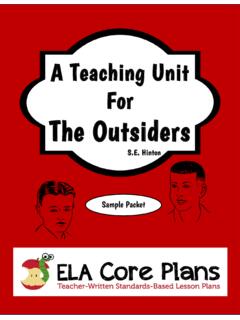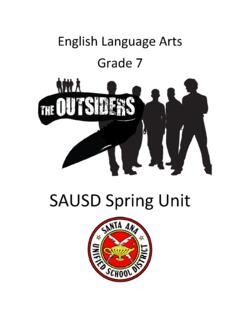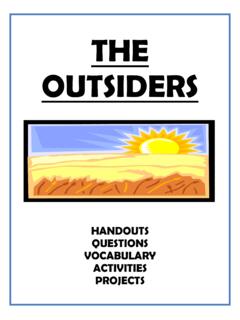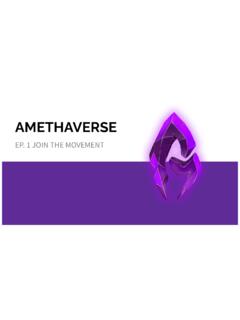Transcription of Shotokan Karate-Do Student Manual
1 Shotokan Karate-Do Student Manual TNT School of Martial Arts Shotokan Karate-Do 1 Table of Contents karate History 3 Martial Arts Biography of Joshua Carrick 2 The Founder of the National karate Association 4 karate Philosophy 5 Dojo Etiquette and Attitude 6 At the Dojo: Procedures and Protocol 7 Shotokan Code of Ethics 8 Dojo Kun 9 What is a Sensei? 10 What is Deep Breathing? 11 The Kiai 12 Practice Intelligently 13 Positive Self-talk 14 Kata Training 15 TNT School of Martial Arts Shotokan Kata Cirriculum 16 The Origins of Shotokan Kata 17 karate as Self-Defense 19 karate as a Sport 20 Master Gichin Funakoshi s 20 precepts of Karate-Do 21 Student Summary Sheet 22 Important Points to Remember 23 karate Terminologies 24 karate Kyu Exam Evaluation 25 Kyu Grading Requirements 26 Appendix: Kyu Academic Self- tests 30 Self-test 1.
2 Yellow Belt exam (8th kyu) Self-test 2: Orange Belt exam (7th kyu) Self-test 3: Green Belt exam (6th kyu) Self-test 4: Blue Belt exam (5th kyu) Self-test 5: Purple Belt exam (4th kyu) Self-test 6: Brown Belt exam (3rd kyu) Self-test 7: Brown Belt exam (2nd kyu) Self-test 8: Brown Belt exam (1st kyu) Martial Arts Biography of Joshua Carrick Mr. Joshua Carrick was born 1975 in Lindsey Ontario, Canada, but did most of his growing up in the New Tecumseth area and began his Traditional Karate-Do training in 1983 at the Bolton Japan karate Association. He studied with 5th degree Sensei I. Fung, and with 8th degree Master of ISK, who granted him a 1st degree Shodan in 1993.
3 In 1994, Mr. Carrick decided to pursue other forms of martial arts. He trained with Sifu Don Munce, a Student of Martin and Michael Macnammara for 7 years in a style of Kung Fu and Kickboxing. After competing in full contact amateur kickboxing 1994 to 1999 and achieving 1 bronze, 2 silver, and 1 gold in the Eastern Canadian Championships Montreal, Quebec, and in 1999 Joshua Carrick represented Ontario at the Nationals in Calgary, Alberta; at the (World Kickboxing Association) National Kickboxing Championships and receiving the title of Golden Gloves Full Contact Fighter, for the cruiser-weight division. Mr. Joshua Carrick returned to Shotokan karate training in 2002 under chief instructor 6th degree Shihan Brad Jones.
4 Mr. Carrick has been actively involved in coaching and instruction at the Brad Jones School of karate , achieving his 2nd degree Nidan in 2004, and 3rd degree Sandan in 2007. Mr. Joshua Carrick has been a member of karate Ontario for several years, and represented Ontario at the Nationals in 2005 Halifax, Nova Scotia. He s been competing at both karate Ontario tournaments, and open tournaments since the 1990 s. Mr. Carrick s traveled to Japan and Okinawa to further his training; While in Tokyo, 2005, Joshua Carrick completed a three day instructors training seminar at the (Japan karate Association) head quarters. Mr.
5 Carrick has maintained Red Cross First Aid Certification, and completed Level 1 karate coach ( ) National Coaching Certification Program. 2 karate History 3 The word karate has been known since the 1920 s; however the roots of the art extend back well over a thousand years and possibly to the 5th century According to legend, a Buddhist monk named Bodhi Dharma took unarmed combat techniques, practiced in India, with him to China. There he developed a system of physical training based on yoga breathing methods and a Chinese unarmed fighting method called Kempo. China s advanced knowledge of acupuncture improved the kempo techniques by making use of weak points in the human body.
6 In 628 a 12 chapter book appeared which was a curriculum for physical fitness (massage therapy) but did not discuss fighting techniques. The author of this book claimed to be a Student of Dharma. This is the legend of the beginnings of karate but can not be taken as factual history. In truth little is know about the early development of karate until the 17th century in Okinawa. It was on the Island of Okinawa, the traditional point of contact between the Chinese and the Japanese cultures, where combat techniques developed and self-development aspects were introduced. Over a long period of time a combative art, known as Tang Hand or Tang Te, developed from a blend of kempo and Te (hand) which was a form of fighting used by the local people.
7 During the Japanese occupation of Okinawa (1609-1868), the use of weapons was prohibited, which forced the people to fight with their bare hands. Some karate techniques are difficult to explain today since they were originally used against weapons. Over a period of some 300 years different forms of Tang Te evolved in various areas of the island. In 1902 the Okinawan government introduced karate into the secondary school system. Itosu was the first instructor; Gichin Funakoshi was also an instructor of this program. It was at this time that a systematized and methodological approach to learning this combative art developed which later became popular among the public.
8 Gichin Funakoshi was born in 1868 and first studied his karate techniques which Shuri-te and Shorin masters Anko Itosu and Yasutsune Azato. Funakoshi practiced calligraphy and published his work under his pen name Shoto. The school where he taught karate became known as the Shotokan (Shoto s school). Later his students and many outsiders acknowledge his style of teaching as Shotokan Ryu; Funakoshi did not refer to his methodology as such. In 1917, Funakoshi was invited to give demonstrations in Japan and the Japanese were so impressed that, in the early 1920 s, karate was introduced into the Japanese elementary school system and given its currently accepted name karate .
9 As karate became more popular, many other Okinawan experts came to give instruction in other systems which, although different from each other, were based on the same common principles. For a short time, at the end of World War II, the teaching of martial arts was outlawed by the American forces, but the ban was soon lifted. Many western service men in Japan during and after the war studied karate and spread it to Europe and the America s. An increasing number of Japanese instructors also moved overseas. During the late 1950 s and the 1960 s this process accelerated and by the 70 s karate was practiced extensively throughout the world.
10 Unfortunately, this accelerated process resulted in many instructors without the knowledge required to fully understand the martial arts of Karate-Do . These instructors created many splinter groups and home- made systems (styles). The Japanese Master Funakoshi Gichin who introduced Karate-Do to Japan in 1921, said that the essence of Karate-Do is the art of being non-violent 4 The Founder of the National karate Association In order to bring some unity to karate , the Federation of All Japan Karate-Do Organizations (FAJKO) was formed in Japan in 1964 and most of the major schools became affiliated with it.








